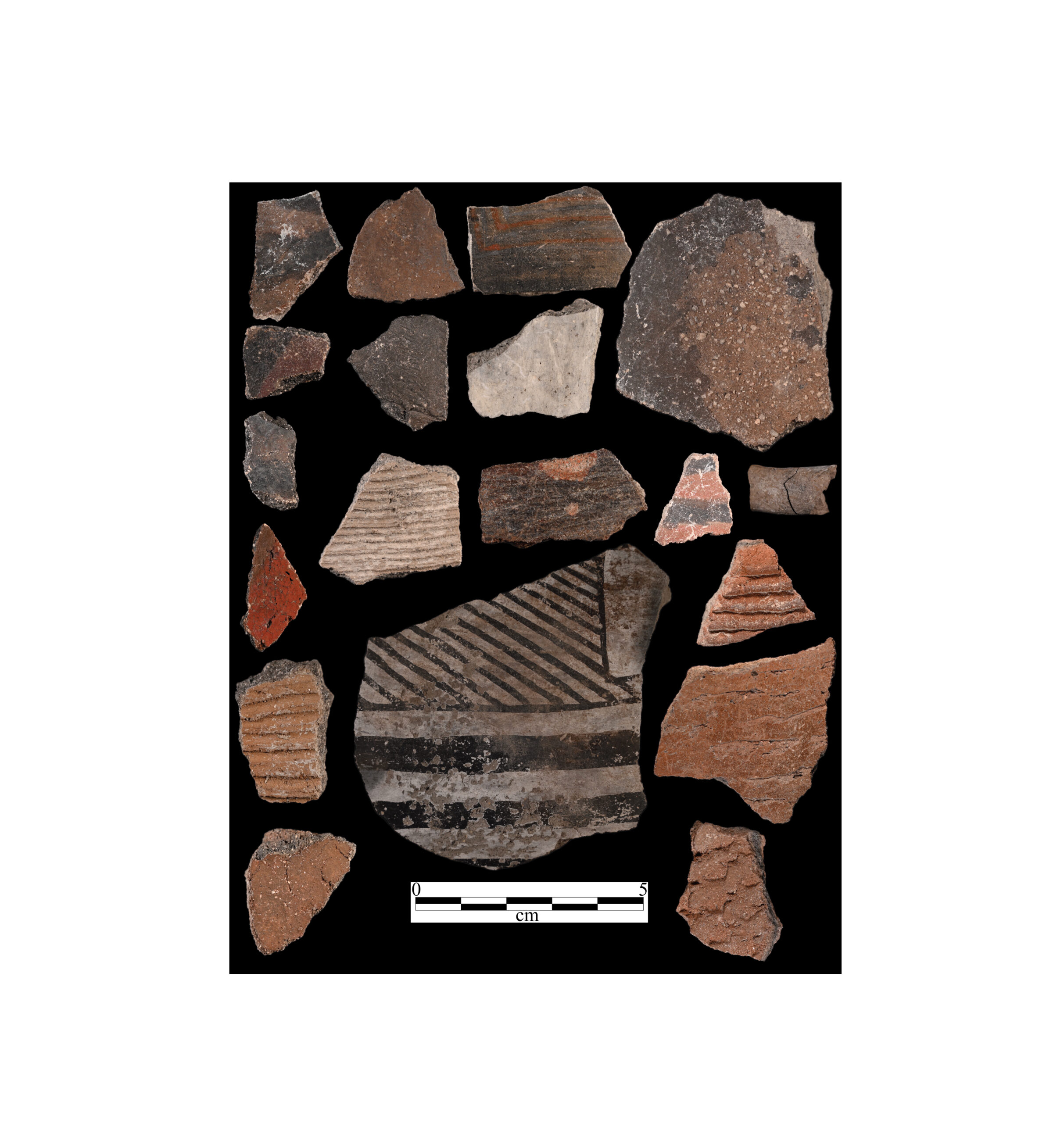When Bryon Schroeder talks about Canta Recio, it’s clear his fascination lies with what is not yet known. This gap in archaeological knowledge provides exceptional potential for learning — that’s what fuels the CBBS director’s quest to find the connections between the melodically named archaeological site and ancient agricultural communities further afield, such as the vibrant Paquimé culture of northern Mexico.
“It seems weird that there are large pueblos in El Paso and northern Mexico and over a dozen villages around Presidio, but there’s nothing in between these regions on a major waterway,” Schroeder says. “There must have been a relationship between all these people. Nobody’s done a lot of concerted work and it remains a significant question. The limits of agricultural adapted groups with specific architecture and ceramics, a distinctive way of life that defines the Puebloan U.S. Southwest and large regions of Northern Mexico (ca. AD 1200), might end here in the Big Bend. The Rio Grande might be the limit of that cultural expression.”
In the 1930s, Dr. J. Charles Kelly, a Sul Ross graduate, was the first archaeologist to study the area in detail. Schroeder studied Kelly’s old photos of the sites where he found village remnants.
“I got a sense of what those sites looked like before Kelley dug them,” he says. “I thought if we could find similar things along the river, we have a pretty good chance of interpreting the distribution of these villages.”
When Schroeder first laid eyes on one such promising site on a late afternoon in 2020, he thought the setting sun behind the mountains was playing tricks on him. Upon his return the next morning, he wasn’t disappointed.
“We found tons of stuff — I realized it was the exact site we were looking for,” Bryon recalls. But he realized he had to assemble the right researchers before starting the complex project in earnest. As 2023 turned to 2024, the first limited excavation began and proved promising.
“Some of the deposits we encountered look like rammed earth architecture, similar to what is found at a Puebloan site,” Schroeder says. But, to his surprise, it is about 400 years older than Kelly’s focus.
“It’s an older expression of Puebloan groups on the river, which means there’s this whole other chapter that we know nothing about,” he says. “We know Kelley documented this same phenomenon up the Rio Grande.”
That means there’s a river corridor that CBBS can now seek to connect.

“We’re poised to launch research into this area of southwestern archaeology that nobody knows anything about,” Schroeder says. “There’s this forgotten chapter of history.”
And what a time it must have been, with people who had commerce and industry, raising macaws and trading turquoise and marine shells. Ceramics found on Canta Recio are tied to Paquimé, a UNESCO World Heritage Site featuring the largest rammed-earth architecture in the world.
“Our little corner of the world is related to this major urban center,” Schroeder says. “We’re trying to understand the relationship of West Texas to the Paquimé world, and that’s totally wide open. We have one site and we hope there are many more that look like it.”
The next step is proof of concept, selecting one site where they can dig down and understand it as a test case, then move up the river.
“If architectural groups were moving down the Rio Grande, it changes Kelley’s interpretation,” Schroeder says. “They contracted around Presidio very late but I think they spread down the river, and managed stands of different cultivars.”
One faculty member is exploring the idea that they had cultivated agave in this region earlier than thought.
“To me it changes the narrative about how people live here,” Schroeder says. “It’s not a passive system, hunter/gatherers barely surviving, eking it out. These people are living in and thriving in a Chihuahuan desert ecotone that’s very hard for us to imagine.””
While Kelley asked the right questions in the 1930s, he couldn’t fathom the size of the cultural connections.
“We’re talking about human mobility of more than 300 miles round trip, and that seems impossible, but it’s not that big a distance for them,” he says. “We’re talking about interactions that take in giant chunks of real estate. Kind of hard to wrap your head around but we have the material record.”


Perhaps the name Canta Recio holds some clues as well. “Singing loudly” is a loose translation from the Spanish, so it could refer to the health of the river at that time, water rushing over the rocks.
There’s an infinite number of ways to go with research: environmental stories, examining a wood post from one of their structures, pottery sherds left behind, speciating charcoal to see what they burned, and all sorts of dating and reconstructive work.
“Those remains hold the story they left behind,” he says. “We get to tell it.”
From this promising start, Canta Recio will inspire years of discovery, eventually unfolding a story that sings like its name in Spanish, loudly and clearly, a story of bold people who lived here before us.
“Something I’ve been realizing more lately, the connectivity of the past and the scale of that connection,” Schroeder says. “I don’t think we understand the scale of the Indigenous world. It keeps me up at night — how connected were these groups? We have underestimated it. It’s cool to think about.”


